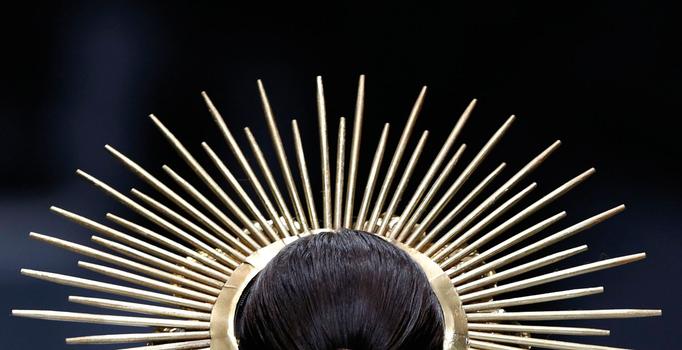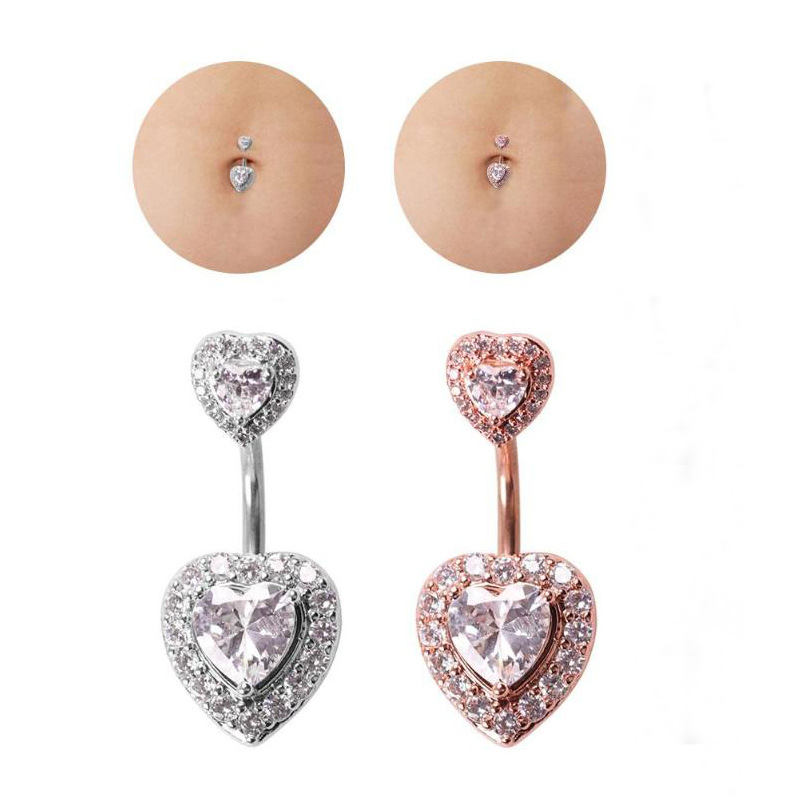Women and jewelry in the Bible
Jewelry is a very important cultural element. In the ancient world, as today, jewelry was used to show one's identity, purchasing power and social status with a symbolic meaning and evocative power. In the pages of the Bible we find multiple allusions to jewels. Precious stones such as agate, sapphire and diamond are mentioned (Job 28,16; Ez 28,13), as well as highly esteemed metals such as gold and silver, the first being the most appreciated of all, especially gold. gold of Ophir (1 Kings 9,28; 22,49; Job 22,24). The jewels are linked to men and women, as well as to the Temple of Jerusalem.
The Bible describes in detail the opulence and splendor of Solomon's reign, highlighting precisely the contacts and commercial dealings of the monarch to obtain gold (1 Kings 10,11), which was used for the construction of the Temple of Jerusalem: "He also overlaid the House, absolutely the whole house” (1 Kings 6,22). Recalling the precious metals and stones possessed by Solomon, the Bible expresses the importance of the king. Other monarchs also point out their valuable and adorned crowns as a symbol of the power they hold (2Sam 12,30). Thus, the greatness of the kings of Israel is a way of affirming the greatness of all the people, and it is also a sign of enjoying the divine election and predilection.
For its part, wisdom literature presents gold as a metaphor for wisdom (Prov 25:11), although it also indicates that this wisdom is preferable to gold and precious stones (Prov 3:13-14; 16:16). This last teaching of the wisdom tradition opens us to another biblical view of jewels, since they do not present such a positive image. Thus, the prophets associate the jewels and the work of the goldsmith with idolatry (Jr 10,9-10; Is 2,6-8; 40,18-25; see also the passage of the golden calf, in Ex 32, done precisely with the jewels of Israel) and distinguish the "crowns of arrogance" from the "gala crown" that Yahweh himself is for his people (Is 28:1-6). We enter this varied sense in texts about women.
In Ps 45 (44) the king of Israel, the one anointed by Yahweh, is accompanied by the gold-adorned queen of Ophir and her daughter wears dresses of gold and brocades. In Is 62,1-5, Jerusalem is metaphorically described as a woman whom Yahweh wanted to marry and who becomes a precious crown: “You will be an adorning crown in the hand of Yahweh, and a royal tiara in the palm of your God. ”. The Song of Songs compares the woman's body with precious ornaments. In its pages the beloved addresses his beloved words such as the following: “Gracious are your cheeks among the earrings and your neck among the necklaces. We will make gold earrings for you with silver beads” (1,10-11).
An eloquent passage on the subject at hand is Gen 24. In it, Abraham orders one of his servants to go to his land, to Aram Naharayim, in order to find a wife for his son, Isaac. . When he arrives at the place he lodges himself next to a well in order to find there the woman chosen by Yahweh. Rebekah appears and, knowing the servant of Abraham that she was the one he was waiting for, he gives her valuable jewels that are part of the marriage agreement: "The man took a gold ring weighing half a shekel, which he placed on the girl's nose, and a pair of ten shekel gold bracelets on his arms” (Gen 24:22).
The mention made by the story of the jewels is worth noting, since it is an element that is absent in the betrothal scene that Jacob and Raquel will later star in. Indirectly, it points to the importance that the biblical story gives to Rebekah, investing her with royal dignity. The story thus anticipates the leading role that he will have later so that Jacob achieves the birthright and Yahweh's promises are fulfilled.
How to Diagnose Gallstones: Gallstones occur in gallbladder and the common bile duct. These stones can be seve... http://t.co/FDwBps0hc4
— Phil Beale Mon Jun 02 08:26:31 +0000 2014
Judit uses his beauty to save her people

The Bible makes a similar metaphorical use of jewelry in the books of Judith and Esther. Judit appears as a still grieving widow; for this reason she “had put on sackcloth” and she fasted except on feast days (Jdt 8,5-6). She hears from her that the people of Israel are in grave danger because Holofernes, head of Nebuchadnezzar's army, is preparing to conquer Judea, and this makes him come up with a plan. She leaves her state of mourning, she takes off her sackcloth dress, bathes, anoints herself with perfumes and carefully combs and dresses.
Likewise, she adorns her body with “her necklaces, bracelets and rings, her earrings and all her jewelry, and she enhanced her beauty as much as she could, with the aim of seducing the eyes of all men who saw her ” (Jdt 10,1-4). Thus, ready to make use of her beauty, she goes to the camp of Holofernes, who lives wrapped in luxury and whose jewels are also described (Jdt 10,21). Holofernes quickly falls into the trap set by Judith. He invites her to a banquet with the purpose of seducing her; she adorns herself again “with her clothes and all her feminine ornaments” (Jdt 12,15) and, taking advantage of her drunken state, cuts off her head, thus achieving the salvation of the entire Jewish people.
In the book of Esther, the people of Israel are threatened with death, this time by a member of King Ahasuerus's court, Haman, determined to exterminate the Jews. The work mentions the royal diadem of the first queen Vashti (Est 1,11) and her successor Esther (Est 2,17). Vashti refuses her husband's request to appear at a banquet wearing her diadem; she ultimately refuses to become a possession of the king that she can flaunt to guests. Her decision will result in her deposition as queen. Paradoxically, Ester will make use of her beauty to get the men in the story to act as she wants and avoid the extermination of the Jewish people.
Jewelry and women, symbol of infidelity
The association between jewelry and women in the Old Testament does not always have positive connotations. In chapter 3 of the prophet Isaiah they are a symbol of the infidelity of Jerusalem. The text mentions the “haughty daughters of Zion” who “walk with their necks stretched out” and who wear “the anklets, the soles and the lunettes; pearl beads, sequins and bells; hairstyles, foot chains, girdles, perfume bottles and amulets, nose rings and earrings” (Is 3,18-21). The prophet pronounces an oracle of condemnation: Jerusalem, unfaithful, is going to be punished by God; “Yahweh will uncover her nakedness” (Is 3,17).
Chapter 16 of Ezekiel also revolves around Jerusalem, symbolically presented as a woman cared for and loved by Yahweh, who in turn acquires symbolic traits of a faithful father and husband. Jerusalem was originally an unwanted and abandoned daughter whom Yahweh took in. Once she reached puberty, He dressed and adorned her with care, freely constituting her as wife and queen: “I adorned you with jewels, I put bracelets on your wrists and a necklace around your neck. I put a ring in your nose, earrings in your ears, and a splendid diadem on your head. You shone like this with gold and silver, dressed in fine linen, silk and embroidery” (Ez 16,11-13).
Jerusalem, however, makes use of her beauty and her fame to prostitute herself, turning the jewels with which Yahweh had adorned her into idols: “You took your gold and silver jewels that I had given you and made images of men for yourself. prostitute yourself before them” (Ez 16,17). Jerusalem will then suffer Yahweh's punishment through her, paradoxically, at the hands of her lovers, who "will rip off your jewelry and leave you completely naked" (Ez 16:39). Within the same work of Ezequiel, the jewels again become a symbol of a certain ambiguity: the precious adornments of Israel, characterized as a woman and a wife, are a sign of Yahweh's predilection, but, as a consequence of his infidelity to the Covenant , they will become an element of punishment.
Israel, her unfaithful wife, will have her jewels torn from her at the hands of her enemies: “They will strip you of your garments and seize your jewels” (Ez 23:26); "They will treat you with hatred, they will seize all the fruit of your labor and they will leave you completely naked" (Ez 23,29). In other places of the same Ezekiel the possession of jewels is due precisely to the prostitution of Israel, who sells herself to foreign powers as a prostitute and receives them as the fruit of her services: "They put bracelets on their hands and a crown beautiful on your head. And I said of the one who was worn out from adulteries: she still continues to indulge in her prostitution, and they come from her to her, as she comes to a prostitute” (Ez 23,42-43).
This more negative view predominates in the New Testament. Thus, in the Apocalypse they appear associated with Babylon, which in the work symbolically represents the power of the Roman Empire before which the community of followers of Jesus must resist while remaining faithful to the gospel. Babylon that in 17,1-4 is presented as a “famous harlot”, who “shone with gold, precious stones and pearls; she carried in her hand a golden cup full of abominations, and also the impurities of her prostitution.” The same city that represents Rome appears in 18:16 as a woman "resplendent with gold, precious stones and pearls" who is going to be stripped of all her wealth.
Finally, we find allusions to women's jewelry in two exhortations addressed to women from the communities of early Christianity. In 1Pe 3,2 the author of the letter addresses the following words to them: “May your adornment not be on the outside, in hairstyles, jewels and fashions, but in the secret of the heart, in the incorruptibility of a sweet and serene soul; this is precious before God.” In a similar way, in 1Tim 2,9, under the authority of Paul, it is pointed out: “Just as women, dressed decently, adorn themselves with modesty and modesty, not with braids, nor with gold or pearls or costly clothes, but with good deeds, as befits women who profess godliness.”
These two testimonies, which form part of a larger exhortative section aimed at limiting the freedom that Christian women enjoyed in the previous generation, are an indication of the concern for their conduct and the intention that their honor and, consequently, that of all the community, not be questioned. The symbolic character of the Old Testament jewels has disappeared and the absence of external adornments becomes, in the case of women, a sign of respectability.







![47 best antiage nutritive cream in 2022 [based on 326 reviews] 47 best antiage nutritive cream in 2022 [based on 326 reviews]](https://website-google-hk.oss-cn-hongkong.aliyuncs.com/drawing/article_results_6/2022/2/27/1918fc37c66ad30564173e69d9df88a0.jpeg)
